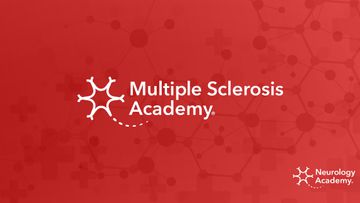A new treatment option for patients with relapsing forms of MS
Event reportsNon- CME symposium hosted by Bruce Cree with presentations from Giancarlo Comi and Adil Javed examined the evidence for ozanimod which has just completed two phase 3 trials.
Bruce Cree gave an overview of assessment and management of MS in clinical practice.
- Patient characteristics must be considered:
- age,
- stage,
- disease severity,
- comorbidities,
- lifestyle
- Drug-related factors:
- safety,
- tolerability,
- efficacy,
- accessibility
How can we optimise the different assessments into our practice? While virtual clinics reign, listening clearly to a patient's experience, perform neurological exams remotely, and schedule MRIs.
Giancarlo Comi introduced ozanimod, giving an RMS programme overview and outlining clinical efficacy.
Ozanimod is indicated for relapsing-remitting MS (looking at the US indications). Giancarlo went through the contraindications for the drug.
Two head to head studies, SUNBEAM (1 year period) and RADIANCE (2 year period) were established to trial ozanimod.
More than 2600 patients with RRMS were studied within these two randomised, double-blind, double-dummy, parallel-group, active comparator-controlled trials.
The sample groups were very similar for both SUNBEAM and RADIANCE in terms of age, numbers of relapses, gadolinium lesions, and so on.
The results showed significant reduction in lesions and brain volume loss. Additionally, nine out of 10 patients showed no 3-month disability progression. Table 1 highlights the key findings across the two studies.

*These findings were not part of the end point for the statistical analysis
Giancarlo noted the clear consistency of results confirmed the positive impact of ozanimod on relapsing-remitting MS.
Adil Javed then gave the relevant safety information regarding ozanimod.
He noted that discontinuation rates were very low, with 94% in SUNBEAM and 92% in RADIANCE completing the studies. Reasons for discontinuation were:
- back pain
- headache
- ALT increase
Only 1% of patients across the two studies had any serious infections. Overall infection rate was 35%, comparable to those with beta interferon.
Lymphocyte counts dropped to -57.2% in SUNBEAM and -56.8% in RADIANCE but 98% of patients were back to normal range within 3 months.
Key references:
- SUNBEAM:
Comi G, Kappos L, Selmaj KW, Bar-Or A, Arnold DL, Steinman L, et al, 'Safety and efficacy of ozanimod versus interferon beta-1a in relapsing multiple sclerosis (SUNBEAM): a multicentre, randomised, minimum 12-month, phase 3 trial', Lancet Neurology, articles / Vol 18, Iss 11, P1009-1020, November 01, 2019 - RADIANCE:
Cohen JA, Comi G, Selmaj KW, et al. Safety and efficacy of ozanimod versus interferon beta-1a in relapsing multiple sclerosis (RADIANCE): a multicentre, randomised, 24-month, phase 3 trial. Lancet Neurol. 2019;18(11):1021-1033. doi:10.1016/S1474-4422(19)30238-8
Related articles
Encouraging excellence, developing leaders, inspiring change
MS Academy was established five years ago and in that time has accomplished a huge amount. The six different levels of specialist MS training are dedicated to case-based learning and practical application of cutting edge research. Home to national programme Raising the Bar and the fantastic workstream content it is producing, this is an exciting Academy to belong to.


